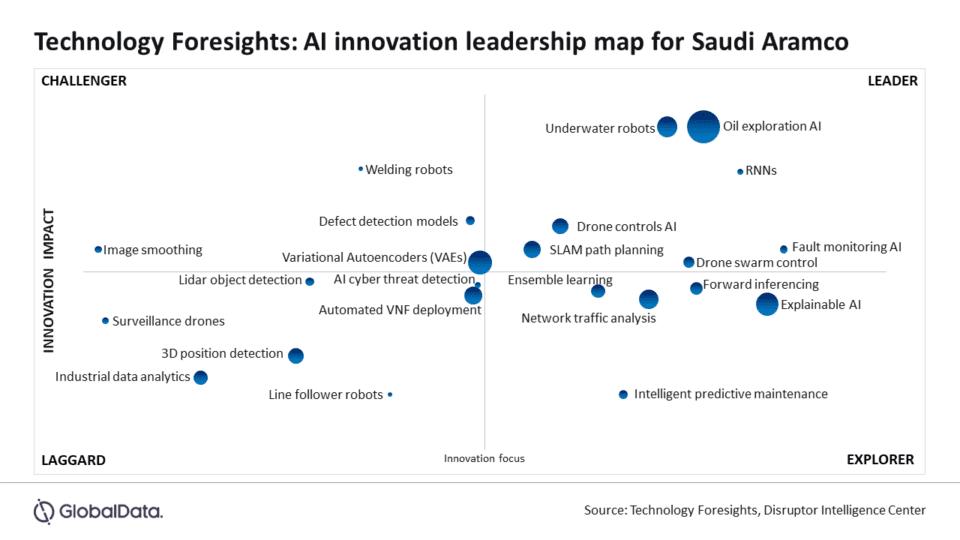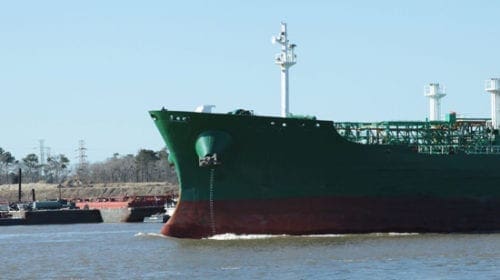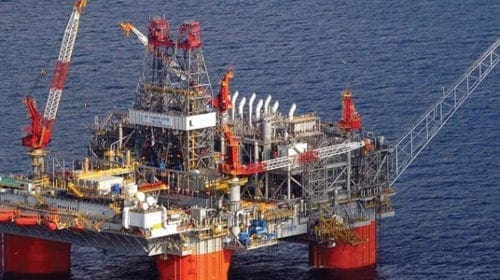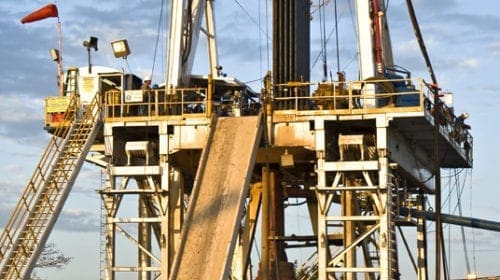The oil and gas industry is confronted with an array of disruptive challenges, which stem from rising energy demands, frequent threats to the supply chain, geopolitical tensions, and the transition to alternative and sustainable fuel sources. In response to these pressures, there is a compelling need to fervently embrace innovation. Leading this charge is Saudi Aramco, the world’s largest oil production company. Aramco is spearheading the innovations by embracing cutting-edge technologies like artificial intelligence (AI), both within its core operations and beyond, which places the company ahead of the curve. This strategic approach has been unveiled by Technology Foresights, an innovation intelligence platform by GlobalData, a leading data and analytics company.
The Saudi state-owned oil company has significantly invested in research and development (R&D) compared to its industry peers, allocating approximately $3.5 billion in 2023, representing a 15% annual increase despite global challenges. This investment is reflected in its innovative efforts, which extend beyond its primary operations.
GlobalData’s Technology Foresights identifies over 250 areas of innovation involving Aramco, spanning technologies poised to disrupt the oil and gas sector, such as AI, drones, robotics, electric vehicles (EVs), and hydrogen technology. Additionally, Aramco has internally developed cybersecurity capabilities to safeguard against cyber threats encountered in recent years.
Sourabh Nyalkalkar, Practice Head of Innovation Products at GlobalData, comments: “Technology Foresights throws light on Aramco’s AI innovation strategy. The innovation leadership map reveals how the company is employing AI in its core operations and selectively prioritizing the adoption of AI innovations in specific areas of its business. For instance, utilizing AI for oil exploration and underwater operations is a significant strategic focus where the company clearly holds a strong leadership position.
“A recently published patent application clearly demonstrates this usage, describing the deployment of drones in sub-surface terrain to capture images. These images are then analyzed using machine learning (ML) algorithms to detect oil spills and pollutants. Another application showcases the use of AI/ML for automating seismic data processing and providing real-time updates for sub-surface reservoir models.”
Aramco is expanding its innovation initiatives beyond patents. In late 2023, the company launched a digital innovation ecosystem named Saudi Accelerated Innovation Laboratory (SAIL). Its goal is to engage with a broader ecosystem, including government organizations and startups, to foster the development of digital innovation products. In March 2024, the company introduced its own LLM through SAIL. Known as Aramco METABRAIN, the generative AI model is trained on data accumulated by the company over the past 90 years.
Nyalkalkar concludes: “Aramco is also betting on futuristic technologies. The company is closely monitoring the startup ecosystem and has in the recent past invested in several companies such as Pragmatic, which develops flexible semiconductor chips, and Sunrate, a fintech company.
“From the perspective of industry watchers and stakeholders, Saudi Aramco’s initiatives in adopting cutting-edge technologies, particularly AI, provide valuable insights into strategic navigation within a disruptive environment. For startups and other vendors developing industry-specific solutions, the insights gained from the in-depth innovation analysis of Aramco and its peers can assist in prioritizing areas that can enhance the value proposition.”
Oil and gas operations are commonly found in remote locations far from company headquarters. Now, it's possible to monitor pump operations, collate and analyze seismic data, and track employees around the world from almost anywhere. Whether employees are in the office or in the field, the internet and related applications enable a greater multidirectional flow of information – and control – than ever before.












